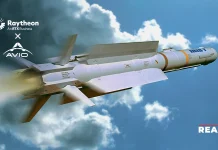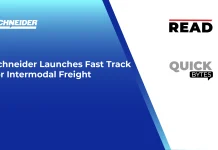Millennium Space Systems, a Boeing company, completed two spacecraft for NASA’s Tandem Reconnection and Cusp Electrodynamics Reconnaissance Satellites, or TRACERS, mission, which will measure the connection between solar wind and the magnetic field surrounding Earth.
“TRACERS will ultimately inform how we understand space weather,” said Dave Machuga, CEO, Millennium Space Systems. “From a national security space perspective, this is incredibly important to understanding the environment our satellites – or any satellites – operate in.”
The team is now integrating the instruments that will study changes in the magnetic and electric field, plasma particles and waves once in orbit. Following integration, the next phase is environmental testing prior to delivering the spacecraft to Vandenberg Space Force Base.
“TRACERS will determine fundamental properties of the process that connects the solar wind to near-Earth space and ultimately drives space weather,” said David Miles, Principal Investigator of the TRACERS mission and F Wendell Miller Associate Professor at the University of Iowa. “Understanding this magnetic reconnection process addresses a priority science target in NASA’s Decadal Strategy for Solar and Space Physics and improves our understanding of the space weather environment around our planet.”
Also Read: NSPA Grants RTX’s Raytheon $478M Patriot GEM-T Missile Contract
Once launched and in a sun-synchronous orbit, Millennium will begin on-orbit mission operations as the TRACERS spacecraft travels along Earth’s polar cusp region, the funnel shaped regions of the Earth’s magnetic field that open over the north and south magnetic poles.
“The TRACERS Instrument Suite incorporates five different instruments from four different institutions, each presenting unique accommodation,” said Richard Prasad, TRACERS program manager, Millennium Space Systems. “Millennium adapted a standard ALTAIR bus to a spin-stabilized platform, with strict magnetic and electrostatic cleanliness requirements.”
The data collected will focus on magnetic reconnection and cusp electrodynamics – two crucial mechanisms driving space weather. By examining the interactions between solar wind and the magnetosphere in the cusp region, TRACERS aims to enhance the understanding of how Earth’s magnetosphere functions and how it reacts to variations in solar wind. This research will improve the ability to forecast space weather events, which can significantly affect technology and infrastructure on Earth.
TRACERS is led by the University of Iowa and managed by Southwest Research Institute in San Antonio, Texas. NASA’s Heliophysics Explorers Program Office at NASA’s Goddard Space Flight Center in Greenbelt, Maryland, provides mission oversight to the project for the agency’s Heliophysics Division.
SOURCE: PRNewswire




